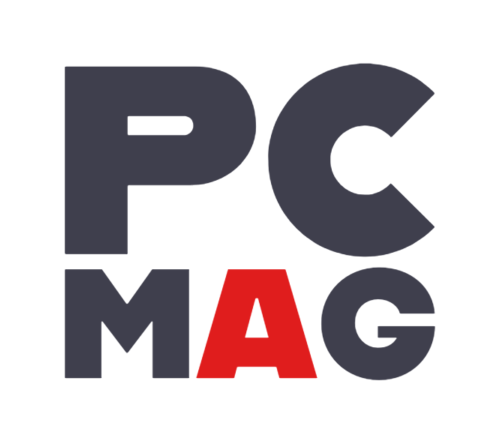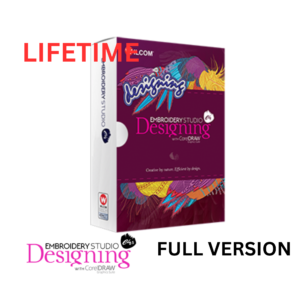Adobe Photoshop is a powerhouse in the world of image editing and graphic design. As with any advanced software, having the right system specifications is crucial for optimal performance. In this comprehensive blog post, we’ll delve into the system requirements for Adobe Photoshop 2022, exploring why they matter, how to ensure compatibility, and offering tips to maximize your Photoshop experience.
1. Introduction to Adobe Photoshop 2022
Adobe Photoshop is a staple in digital art, photo editing, and design. With each new version, Adobe introduces a range of new features and improvements. Photoshop 2022 continues this tradition with enhanced performance, new tools, and expanded capabilities. However, to fully harness its potential, your computer needs to meet specific system requirements.
2. Minimum System Requirements
Understanding the minimum system requirements is the first step to ensuring that Photoshop 2022 will run on your machine. The minimum requirements are designed to allow the software to run, but they might not offer the best experience.
2.1. Operating System
- Windows: Photoshop 2022 requires Windows 10 (64-bit) version 1909 or later. Adobe has optimized the software to leverage the advancements in Windows 10, but Windows 11 is also fully supported.
- macOS: For macOS users, Photoshop 2022 needs macOS Mojave (10.14) or later. Adobe ensures compatibility with recent macOS versions, but it’s always good practice to use the latest stable version of macOS for better performance and security.
2.2. Processor
- Windows & macOS: A multi-core Intel processor with 64-bit support is required. AMD processors are also supported, but Intel’s processors tend to be the benchmark for Photoshop performance. A more recent processor will enhance overall performance and speed up processing times.
2.3. RAM
- Windows & macOS: The minimum RAM requirement is 8 GB. While this is the minimum, Adobe recommends 16 GB for a smoother experience. Adequate RAM ensures that Photoshop can handle large files and complex operations without significant slowdowns.
2.4. Graphics Card
- Windows & macOS: A GPU with DirectX 12 support is required. Adobe has made use of GPU acceleration for many features, so having a compatible graphics card can significantly improve performance, especially for tasks like 3D rendering and advanced effects.
2.5. Storage
- Windows & macOS: At least 4 GB of available disk space is necessary for the installation of Photoshop. However, for optimal performance and to accommodate your projects, having a larger SSD (Solid State Drive) is recommended. SSDs offer faster read/write speeds compared to traditional HDDs.
2.6. Display
- Windows & macOS: A display with at least 1280 x 800 resolution is required. For a better visual experience and to work efficiently with high-resolution images, a higher resolution monitor is advisable. A monitor that supports color accuracy is also important for professional design work.
2.7. Internet Connection
- Windows & macOS: An internet connection is required for the initial installation and activation of Photoshop. Adobe’s Creative Cloud suite requires online verification to ensure that you have a valid subscription.
3. Recommended System Requirements
For a more seamless experience, Adobe provides recommended system requirements. These specifications ensure that Photoshop 2022 operates at its best, allowing you to leverage all its features efficiently.
3.1. Operating System
- Windows: Windows 10 (64-bit) version 21H1 or later. While the minimum requirement is Windows 10 version 1909, using a more recent version can improve stability and compatibility.
- macOS: macOS Big Sur (11.0) or later. The latest macOS versions come with improvements that enhance performance and security.
3.2. Processor
- Windows & macOS: Intel Core i5 or AMD Ryzen 5 processor (or equivalent) is recommended. These processors offer better performance for handling intensive tasks.
3.3. RAM
- Windows & macOS: 16 GB or more. More RAM allows for smoother multitasking and handling of larger files.
3.4. Graphics Card
- Windows: NVIDIA GeForce GTX 1050 or equivalent with 2 GB of VRAM. Adobe Photoshop relies on GPU acceleration for many features, so a dedicated graphics card with sufficient VRAM improves performance.
- macOS: Apple Metal-capable GPU. Apple’s Metal API provides enhanced graphics performance, making it crucial for macOS users.
3.5. Storage
- Windows & macOS: SSD with at least 8 GB of available space. An SSD improves overall speed and responsiveness compared to an HDD.
3.6. Display
- Windows & macOS: A display with a resolution of 1920 x 1080 or higher is recommended. High resolution and color accuracy are important for detailed design work.
3.7. Internet Connection
- Windows & macOS: High-speed internet connection for downloading updates and accessing online features. Faster internet speeds facilitate quicker downloads and smoother use of cloud-based features.
4. Why System Requirements Matter
Understanding and meeting system requirements is crucial for several reasons:
4.1. Performance
The right system specifications ensure that Photoshop runs smoothly, with fast load times and minimal lag. Insufficient resources can lead to crashes, slow performance, and an overall frustrating experience.
4.2. Feature Utilization
Many of Photoshop’s advanced features, such as GPU acceleration, require specific hardware capabilities. Meeting or exceeding the recommended requirements ensures that you can use these features effectively.
4.3. Future-Proofing
Investing in a system that meets or exceeds the recommended requirements can extend the useful life of your computer. As Adobe continues to update Photoshop, newer versions might have higher system requirements.
5. Optimizing Your System for Photoshop
To get the best performance out of Photoshop 2022, consider the following optimization tips:
5.1. Update Your Hardware
Ensure your computer meets or exceeds the recommended system requirements. Upgrading components such as RAM, SSD, and graphics card can significantly improve performance.
5.2. Keep Software Up-to-Date
Regularly update Photoshop and your operating system. Adobe frequently releases updates that fix bugs, improve performance, and introduce new features. Keeping your software current ensures compatibility and security.
5.3. Manage System Resources
Close unnecessary applications while using Photoshop to free up system resources. Running multiple high-demand programs simultaneously can slow down Photoshop.
5.4. Optimize Photoshop Settings
Adjust Photoshop’s performance settings to match your system’s capabilities. You can allocate more RAM to Photoshop, enable or disable GPU acceleration, and manage cache levels through Photoshop’s preferences.
5.5. Use External Storage
For large projects, consider using external SSDs or high-speed external drives. They provide additional storage and can help keep your internal drive uncluttered.
6. Troubleshooting Common Issues
Even with the right system specifications, you might encounter issues. Here are some common problems and their solutions:
6.1. Photoshop Crashing
- Solution: Ensure your system meets the minimum requirements. Update your graphics card drivers and Photoshop to the latest versions. If crashes persist, consider resetting Photoshop’s preferences or reinstalling the software.
6.2. Slow Performance
- Solution: Check if other applications are using system resources. Increase the allocated RAM in Photoshop’s preferences. Consider upgrading hardware components if your system consistently struggles with performance.
6.3. Compatibility Issues
- Solution: Verify that your operating system version is supported by Photoshop 2022. Ensure all system drivers are up-to-date.
7. Conclusion
Adobe Photoshop 2022 is a robust tool for image editing and design, but its performance is heavily reliant on meeting the right system requirements. By understanding both the minimum and recommended specifications, you can ensure a smoother, more efficient experience. Investing in the right hardware, keeping your software updated, and optimizing your system will help you make the most of Photoshop’s powerful features.
Whether you’re a professional designer or a hobbyist, having a system that meets or exceeds Photoshop’s requirements is key to unlocking its full potential. By following the tips and recommendations in this blog, you can ensure that your Photoshop experience is as productive and enjoyable as possible.




